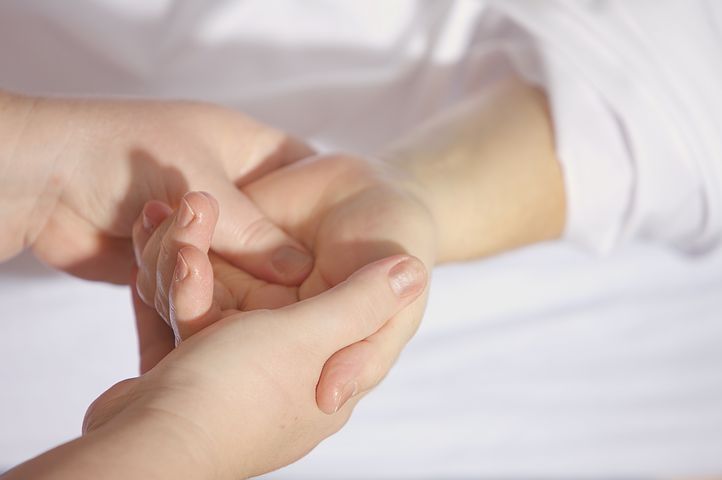Excerpted from “Insight for Bodyworkers: Connecting with Blind and Visually Impaired Clients” By Mary Kathleen Rose
Sept/Oct 2012 issue of Massage and Bodywork magazine
Conditions of the eyes range from common eyestrain, myopia (nearsightedness), and presbyopia (age-related farsightedness) to diseases that threaten significant loss of vision, such as cataracts, glaucoma, macular degeneration, and retinopathy. While there are treatments to delay these conditions, as of yet there are no cures. Any of these visual conditions can increase difficulty in determining color and detail, as well as limit contrast, depth perception, and night vision.
When eyesight is impaired, the individual may suffer from eyestrain or myofascial tension in other parts of the body as she struggles to compensate for the visual impairment. For example, holding the head in awkward positions to “try and see better” can contribute to tension in the head, neck, shoulders, and upper back. Decreases in depth perception or sensitivity to light can affect balance as the individual braces to avoid falling or bumping into objects. Just like the rest of us, visually impaired individuals often hold tension in their muscles and don’t realize it.
PSYCHOSOCIAL CHALLENGES FOR THE VISUALLY IMPAIRED
The practical challenges of living with blindness or visual impairment are obvious, considering the dependence on the visual sense that most of us take for granted. Vision loss affects everyday activities of living, and also involves innate annoyances with light perception (increased glare, diminished light perception, loss of color perception, loss of contrast, etc.). But the psychosocial aspects of coping with loss of vision are also significant. The NFB reports that, since the 1980s, blindness rates among the most feared afflictions, along with cancer and HIV/AIDS.
As people struggle with sudden or gradual loss of vision, they may experience a full range of responses and emotions, as with any significant loss.2 Some common responses include anger, depression, fear, frustration, sadness, and uncertainty not only about the health aspects of losing sight, but also the implications regarding work and home situations. Other issues facing visually impaired individuals include:
Changes in social life. Due to their own fears or lack of knowledge, not everyone is supportive or capable of empathy for those undergoing visual challenges. Damon, a man in his mid-30s dealing with newly diagnosed glaucoma and facing the necessity of surgery to halt the progression of the disease, was disheartened by the reaction of a friend who told him, “Hey man, you best not talk about your eyes. It bums people out.”
Loss of mobility. Driving a car is a key aspect of independence, and the inability to drive is a significant loss in itself.
Isolation. Reduced mobility can lead to isolation. With loss of hearing, one can still see what is going on, but with loss of sight, one loses the ability to see faces and the nonverbal communication that goes with facial recognition. In social situations, people often tend to avoid people who are blind, whether out of fear or ignorance.
Safety issues. Many visually impaired or blind people hesitate to leave home or venture out in unfamiliar territory because they feel insecure.
With the support of health professionals, low-vision specialists, family, and friends, people with visual impairment and blindness do adapt to changes in their loss of visual function. Many of the coping skills that lead to this healthy adaptation involve making generally wise lifestyle choices: getting regular rest and exercise, eating wholesome food, enjoying time in nature, and receiving nurturing massage and bodywork. But it also involves having appropriate medical interventions where necessary and taking advantage of specialized training to maintain independence, safety, and quality of life. Vision rehabilitation can help people maximize existing vision or cope with visual loss via use of adaptive tools and devices, including large-display devices and specialized computer software.
BODYWORK CONSIDERATIONS
Therapeutic massage and bodywork serves as a wonderful complementary therapy for people who are blind or visually impaired. It can be helpful in alleviating some patterns of compensation to the musculoskeletal system or general tension due to physical and emotional stress. For people who have lost significant function of their sight, massage provides a nurturing experience through another avenue of perception: the sense of touch. It also helps provide emotional support to those suffering from the trauma of sudden or gradual vision loss.
NOTE: Massage therapists use various techniques to help alleviate pain in neck, shoulders, and upper back common in people with vision impairments. They also work with most other musculoskeletal issues. Read more in the Massage and Bodywork article.
The developer of Comfort Touch nurturing acupressure, Mary Kathleen Rose, BA, CMT, is dedicated to holistic health education. An ardent advocate for the elderly and the ill, she provides training and support for palliative massage in hospices, home care, and medical settings. Rose is the author of Comfort Touch: Massage for the Elderly and the Chronically Ill (Lippincott Williams & Wilkins, 2009). She can be reached through www.comforttouch.com or 303-651-9375.
